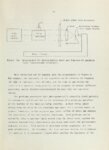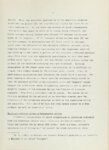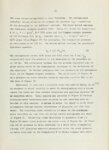| Description |
Shock Propagation in Solids A mechanism is proposed which relates the roles of elastic, plastic, unstable shock and stable shock waves in elastic-plastic solids. The model is based upon extending the equation for the long-tiadinil acoustic velocity for solids into the plastic region as portrayed by the stress-strain curves for the bulk and shear moduli. The explanation is qualitative but agrees in principle with experimental results observed. A study was made concerning some of the various effects of shocks passing through transparent solids. Explosives were the primary shock source, while the resulting shocks passing through the specimens were observed photographically by either a streak camera or a high speed framing camera. Specifically the transparent specimen was placed between the camera and an intense parallel or diffuse light source, and the change in index of refraction of the specimen by the shock produced recordable images. The results were of necessity rather qualitative. Nevertheless somewhat detailed studies were made concerning explosive end impulse, explosive lateral impulse, shock behavior at a free surface, shock behavior at a solid-solid interface, shock velocity attenuation and free surface velocities. Shock Wave Initiation of Cast Explosives Through Inert Barriers Detonations in donor charges interrupted by inert barriers reformed in receptor changes in the time 1 and at distances S2 into receptor charges such that S2/t was approximately the acoustic velocity CL in the non-reacte4 explosive. But when the charge length was less than S2, no initiation occurred with unconfined receptors. However, with metals of high impedance on the terminal end of a receptor of length Lr such that 0.5 S2 < Lr < S2 the initiation occurred at the distance X = 2Lr - S2 from the donor-receptor barrier plate. Furthermore, |












































































